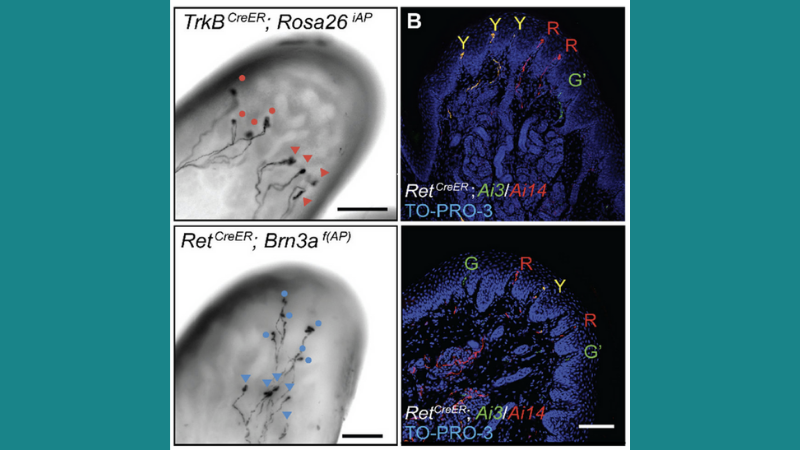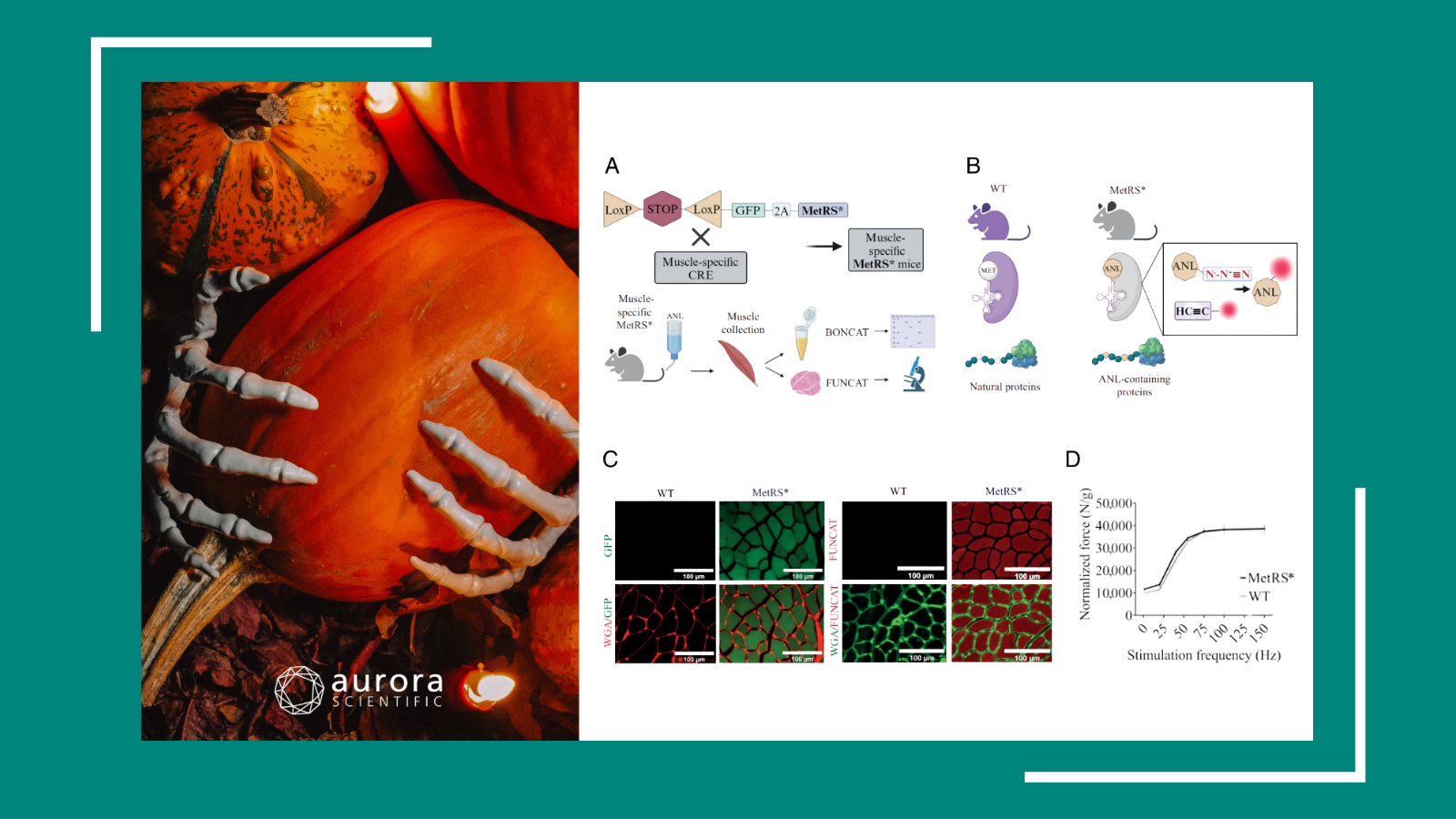Spatial arrangement of Ret+ and TrkB+ Meissner afferent cutaneous endings. Image courtesy of Neubarth et al., 2020.
This publication review summarizes some of the best recent articles that fall under our Neuroscience category. Specifically, these studies focus on advances in the topics of olfaction and somatosensation.
Context-dependent decision making in a premotor circuit.
In this article, Wu et al., 2020, focused on the neural mechanisms behind behaviours and decision making in rodents. Cognitive functions require a large hierarchy of decision-making and executive control, and these functions extend far beyond simple input-output style responses and motor circuits. The authors examined mouse responses to an olfactory delayed match to sample task (where a test odor must be determined as different or the same with a sample odor by licking in the correct direction for the mouse to receive a reward). Using our 200B miniPID Fast Response Olfaction Sensor to confirm the odors’ kinetics, they determined that the premotor area anterolateral motor cortex (ALM), whose neurons play a role in planning of licking, also plays a role in processing perceptual information. Wu and colleagues concluded that the ALM receives context to determine the identity of the odor sample and decipher whether that odor matches the preceding sample.
Meissner corpuscles and their spatially intermingled afferents underlie gentle touch perception.
In this article, Neubarth et al., 2020 sought to determine the requirement for Meissner corpuscles, mechanosensory end organs in glabrous skin, in touch and sensorimotor control. A function for the Meissner corpuscle had not yet been determined previously. By eliminating brain-derived neurotrophic factor (BDNF) in mutant mouse models, Meissner corpuscles were drastically reduced and deficient in perceiving light touch on glabrous skin. The authors applied controlled force through skin indentation using our 300-C-I Dual-Mode Indenter. The authors found two Aβ mechanosensory neuron types that innervate the Meissner corpuscle and have distinct properties that enable sensation of light forces and the behaviour responses to these gentle forces on glabrous skin. They found that the Meissner corpuscle and its low-threshold mechanoreceptor are involved in light touch perception and fine sensorimotor control.
Quantitative assessment of olfactory dysfunction accurately detects asymptomatic COVID-19 carriers.
In this article, the objective of Bhattacharjee et al., 2020 was to determine the extent of olfactory loss, a self-reported symptom of COVID-19, in asymptomatic carriers. Bhattacharjee and colleagues designed an olfactory-action meter that was able to quantify olfaction reduction in asymptomatic patients. The odors used in their study were measured using our 200B miniPID Fast Response Olfaction Sensor. This fast and reliable method revealed that by quantifying olfactory loss, asymptomatic SARS-CoV-2 carriers were able to be identified with considerable accuracy. This protocol can serve as a basis for enhancing rapid screening strategies for large populations to counter the spread of COVID-19.




